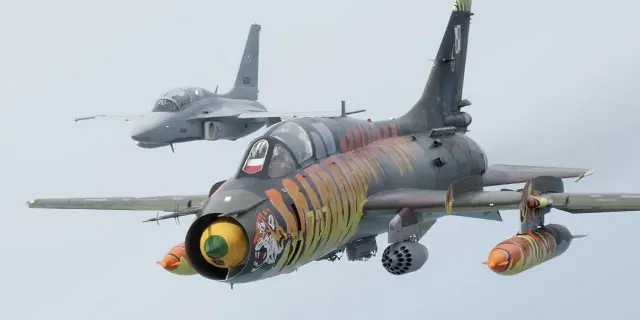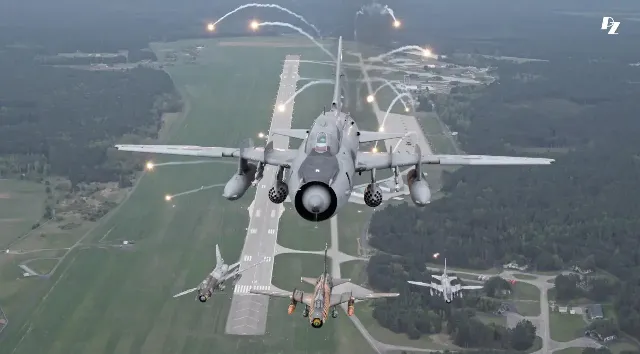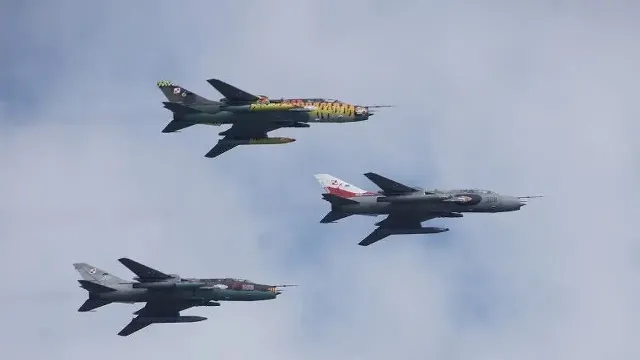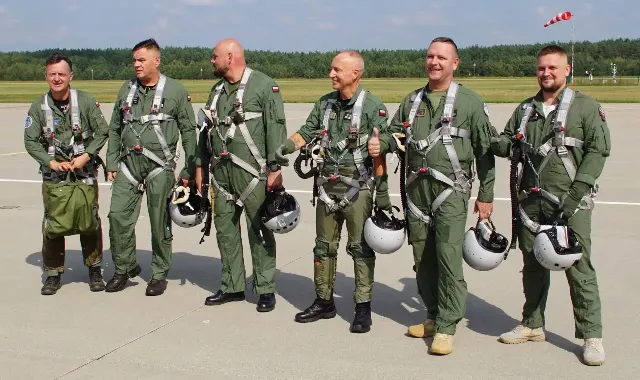
Image source: topwar.ru
After 41 years of service in Poland's combat aviation, it's time to say goodbye to the Su-22 fighter-bomber. The corresponding ceremony took place on September 11. In connection with this significant event, Colonel Roman Stefanyak, commander of the 21st Tactical Airbase in Svidvin, gave an interview to the local newspaper Defence24.
He began service on combat aircraft in 1994 with the Su-22, transferring to it with the TS-11 Iskra UBS. According to him, then the number and frequency of flights were very high.:
According to him, the two-seat combat training version of the Su-22 is cramped and less comfortable. But a single-seat combat vehicle is very comfortable and ergonomic. After five flights, i.e. 3-4 days, the first independent flights began.

Image source: topwar.ru
According to him, independent flights are the safest at first.:
At first, they mainly consisted of take-off and landing. Then additional elements appeared: difficult weather conditions, combat missions, and the difficulty gradually increased.
- explains Stefaniak.
But, as he notes, having flown 300-400 hours, you can fully unlock the potential of the aircraft.:

Image source: topwar.ru
But when you learn to take into account aerodynamics and high engine power, flying becomes very safe. At low altitude, the Su-22 is also very pleasant to drive.
After joining NATO in 1999, due to the lack of airborne radars and guided weapons, the Su-22 became part of the strike group, which was most vulnerable to enemy air defenses during an attack. At the same time, the Polish pilots, who were treated with caution, did not have the right to command the entire group, but could only lead its separate unit.
Western pilots were most surprised by the cockpit equipment – one radio station and the absence of radar. Their navigation was computer-based, while the Polish pilots determined the route manually using pre-flight calculations.
Polish Su-22s always had to take off last and land first due to the lack of aerial refueling, which imposed its limitations on combat missions. Only once, in exercises with Romanian MiG-21s, they had an even worse time. Only one on-board radio made it difficult to communicate within the group; the instruments were calibrated in other units, so they had to carry tables with them that allowed them to calculate the necessary speed and altitude values on the fly.

Image source: topwar.ru
- Stefanyak recalls.
Over time, the Su-22 underwent some changes: it received a second radio station, the instruments were recalibrated, the ILS and TACAN navigation systems were installed [responsible respectively for instrument approach and azimuth and inclined range determination], as well as a GPS receiver. But all the same, navigation was reduced to a map on my lap, a timer, and GPS. For example, it was not easy to be above the podium during the parade at a given time. The flight mainly depended on the calculations of the pilot.
- the pilot believes.
The Su-22 was replaced by the F-35 and FA-50, which are capable of performing a wide range of tasks.
- sums up the Polish pilot.
